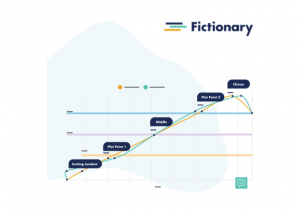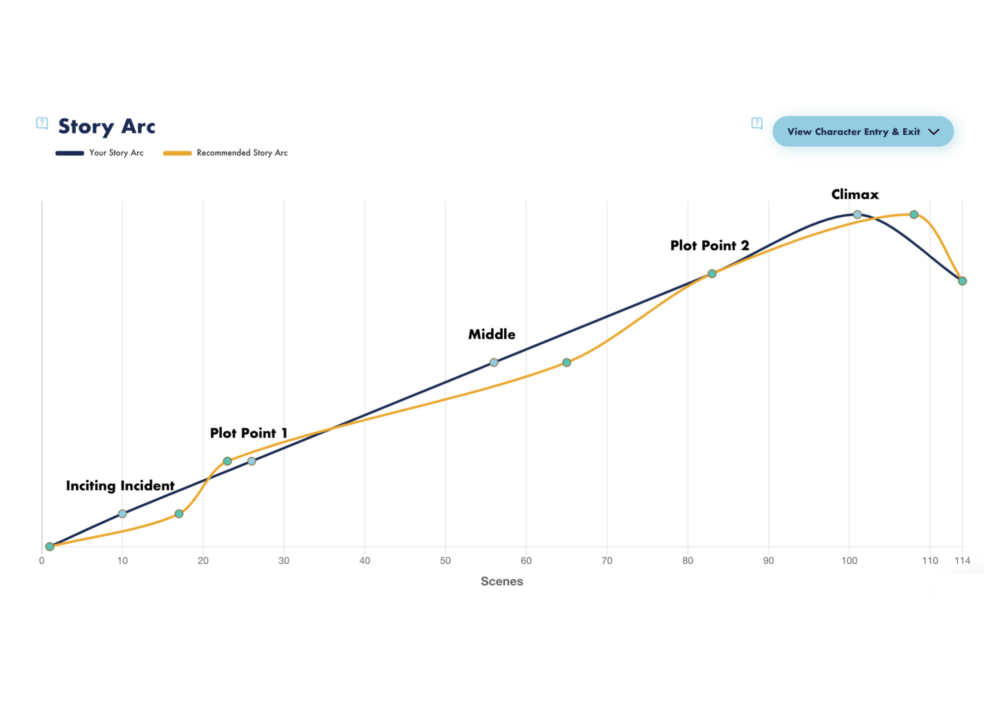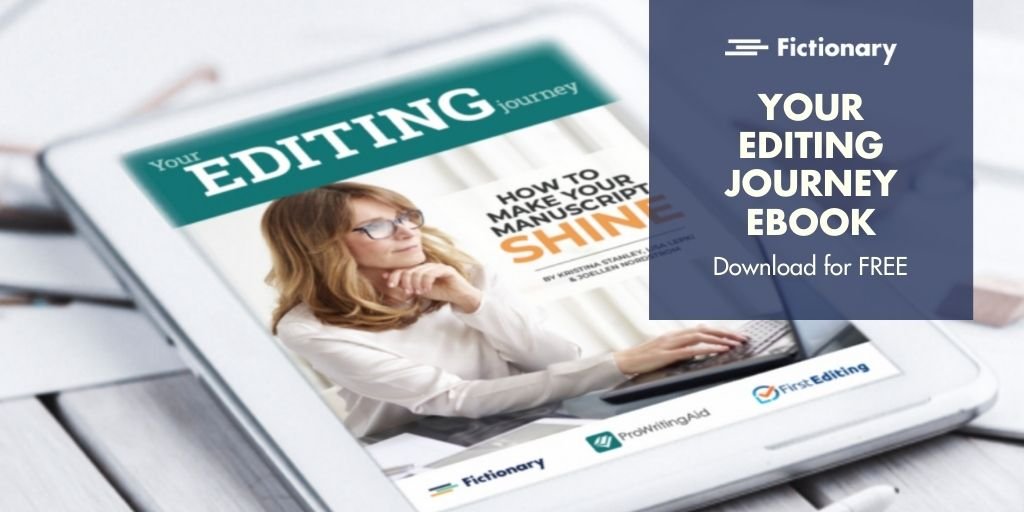
Plot Point 2 is the end of act II and all is lost. Your protagonist must work hard to get what she wants or lose everything.
The story arc has been around for over 2000 years, and is a proven way to tell a good story. It’s not the only way, but it does work.
Evaluating your story arc in the context of the three-act structure should spark your creativity, not box it in. Use the story arc to make your story better by understanding why certain key events happening at the right time will engage your readers.
The story is yours. The story arc helps you make it better.
Today, we’re talking about Plot Point 2.
The story arc is made up of the Inciting Incident, Plot Point 1, the Middle and Plot Point 2, and the Climax.
![]()
What Is Plot Point 2?
Plot Point 2 signals the end of Act II.
Plot Point 2 is a low point for your protagonist. Her actions since the middle have caused disaster. At Plot Point 2, she becomes more determined to reach her goal.
Famous Second Plot Points
Note: there are story spoilers, so don’t read this section if you want to read the book or see the movie.
Gone Girl: Amy comes home and lies about being kidnapped. Nick wants nothing more to do with her, but can’t get away. Amy will frame him for attempted murder if he leaves her. Life looks bad for Nick.
The Martian: Mark leaves his base for the final time and has to cover 3000 km in a hostile environment. If he misses the window for the crew to pick him up, he’ll die on Mars. This is serious motivation.
The Philosopher’s Stone: Harry encounters the Voldemort in the Dark Woods. Voldemort tries to kill Harry, but a centaur rescues Harry. Harry will have to confront Voldemort at some point if he’s going to survive.
Twilight: A vampire is going to go after Bella for her blood, and Bella must leave Fork. Bella wants to survive.
Placement of Plot Point 2
Plot Point 2 should be somewhere around the 75% mark in your novel. If this plot point comes too late, the story will feel like it’s dragging. If it comes too early, the story may feel rushed or lacking in depth.
Here’s an example of a story arc from Fictionary. The orange line shows the recommended story arc, and the green line shows the actual story arc for the novel.

You can see above, the inciting incident occurs too late in the story, plot point 1 occurs too quickly after the inciting incident, and the middle occurs too late in the story.
After that, Plot Point 2 is reached too quickly, denying the reader story depth. By appearing too early, it also means the last act is dragging. Act III is going on for too long.
And on it goes until the climax is too late, and there isn’t enough time for a satisfactory resolution. Meaning the reader won’t read the writer’s next book.
Relationship to the Plot Point 1
After editing many novels, I’ve learned authors sometimes need to review not only what the plot points are and where they fit on the story arc, but also how they relate to the other plot points.
Plot Point 2 Should Mirror Plot Point 1
Let’s take a quick look at Gone Girl.
Plot Point 1: Amy’s first treasure hunt clue is found. Nick has no choice but to follow it. Amy’s life is at stake (as far as the reader knows).
Plot Point 2: Amy comes home and lies about being kidnapped. Nick wants nothing more to do with her, but can’t get away. Amy will frame him for attempted murder if he leaves her. Life looks bad for Nick.
In Plot Point 1, Nick is going to look for Amy. In Plot Point 2, he’s found her. In Plot Point 1, it looks as if Amy’s life is in danger. In Plot Point 2, Nick’s life is threatened with prison.
StoryTeller not only draws your story arc for you in seconds, but you can easily reference your key scenes and determine quickly if they mirror each other. Editing is a complex cognitive task, so why not use the same tools professional editors use to edit a story. StoryTeller is designed to help you focus on the key story elements for characters, plot, settings and the overall structure. You’ll know you’ve covered everything!

StoryTeller is creative editing software for fiction writers. Transform your story, not just your words. Successful stories depend on your ability to edit, improve, and revise your work. Only when you master story editing, can you master storytelling.
StoryTeller draws a recommended story arc and draws the story arc for your story. You can see how to improve the structure of your story within seconds.
Why not check out Fictionary’s StoryTeller free 7-day trial and tell powerful stories?


